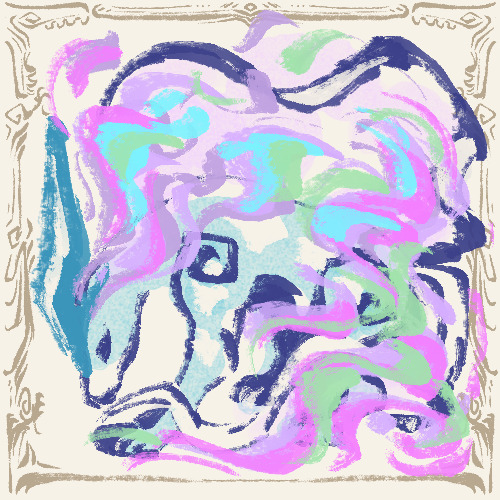Don't wanna be here? Send us removal request.
Text
Giant Antlions (Palpares immensus): these enormous antlions have been known to attack geckos and other small reptiles
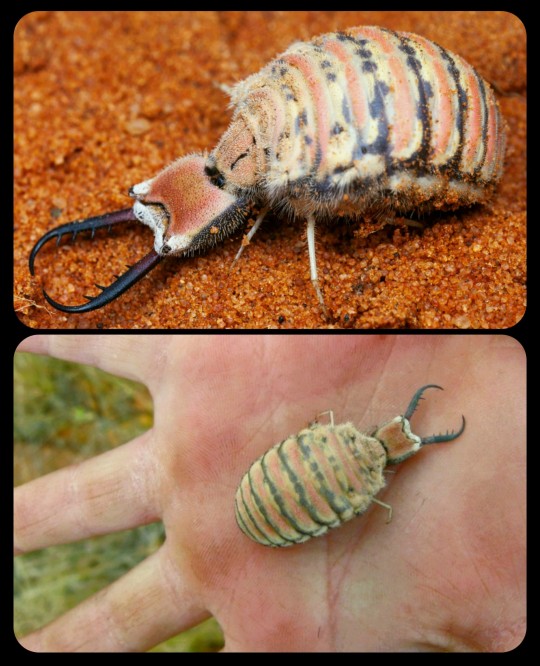
The images above depict the larval stage of Palpares immensus, which is one of the largest antlion species in the world.
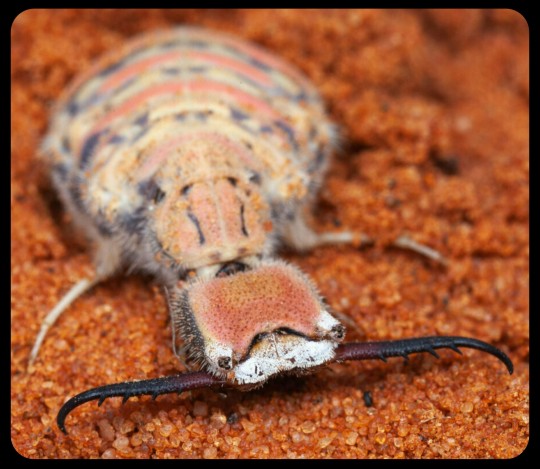
This article provides more information about the unusual behavior of this species:
The larvae live freely in sand and are ambush hunters. They are voracious predators and feed mainly on other arthropods, but have been known to attack geckos and, in one case a small adder. They are unable to feed on these reptiles and usually die as a result of not being able to extract their jaws from the vertebrate prey.
These antlions can be found in sandy, arid environments throughout southern Africa.
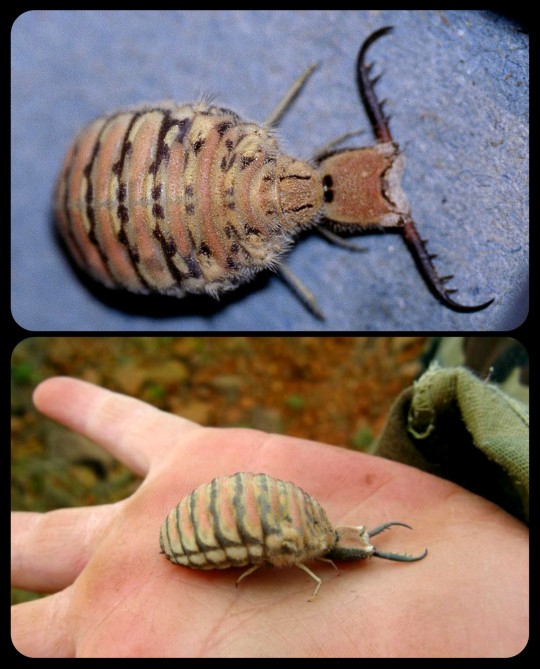
The adult form of Palpares immensus is also depicted in the images below:
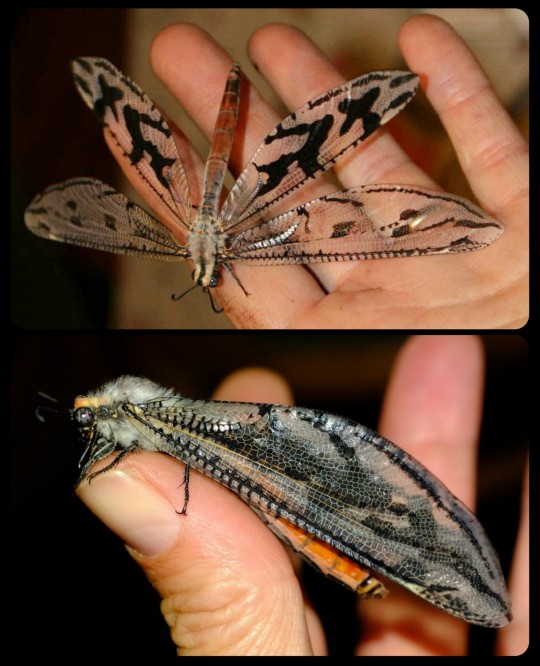
Sources & More Info:
Biodiversity and Development Institute: Palpares immensus
Global Biodiversity Information Facility: P. immensus
Animal Life: Giant Antlion Larva
What's That Bug?: Uncovering Antlion Habitats
2K notes
·
View notes
Photo

Albino rarity: a glowing white snail
MILKY BAR SNAIL: The extremely rare albino.
It’s the Milky Bar snail - a giant carnivorous albino Powelliphanta found living in New Zealand bush.
A group of trampers stumbled across the rare find - only the second recorded - during a trip though the Kahurangi National Park at the tip of the South Island.
“Our group had seen three or four snails already that morning as it had rained and they’d come out in the wet conditions,” said tramper Bill Brough, of Motueka.
“Then I saw the white snail and went wow! We were excited to see it, knowing how extraordinary it was.”
Powelliphanta snails are found only in New Zealand and are the giants of the snail world. They are carnivores, with their favourite prey being earthworms. They also eat slugs.
Photos taken by the Waimea Tramping Club show the Powelliphanta hochstetteri hochstetteri had a characteristic golden brown-spiralled shell but a body that was glowing white rather than the usual deep black colour.
Department of Conservation Powelliphanta expert Kath Walker says in more than 30 years studying the native snails it is only the second albino she has seen.
The first was 23 years ago in 1988, when a Powelliphanta gilliesi gilliesi snail was found at Mt Burnett in Golden Bay.
However, that gilliesi snail was only partially albino. It had dark internal patterning still visible on its otherwise white body and, like the recent find, still had a normally-coloured shell.
Brough said no patterning was apparent on the Powelliphanta hochstetteri hochstetteri he saw.
He describe the snail as “off-white, like Milky Bar white chocolate” in colour.
Waker said albinism was known to occur in many animal species around the world.
The absence in pigment, which could be partial or complete, was due to a genetically-inherited defect in the enzyme which produced melanin.
She has since searched the spot where the latest white Powelliphanta was seen but was unable to find it.
“I was curious and interested to see the albino snail as it is exceptional to come across one,” Walker said.
“From the photos it looks to be an adult snail at least 10 years old and I am amazed it has survived this long. Its white body would make it clearly stand out to be picked off by weka or other predators.”
Earlier this month it emerged the Department of Conservation accident froze 800 Powelliphanta Augustus snails to death after taking them from the Stockton plateau on the West Coast for protection.
SNAIL FACTS
*Powelliphanta snails, found only in New Zealand, are the giants of the snail world with striking spiralled shells in an array of colours and patterns. They are carnivores, their favourite prey being earthworms. They also eat slugs.
*These snails live among the leaf litter on the forest floor from which they emerge in cool, wet weather. Shells are more often seen than snails out of their shells which are only spotted infrequently.
*The white snail is a brown-based Powelliphanta hochstetteri hochstetteri which grows up to 80 mm across. It is found on the Arthur and Lockett Ranges. A yellow-based form of the species lives north of Takaka Hill.
*The species is endangered due to predation by introduced pests: possums, rats, pigs and thrushes. DOC carries out possum control in the area primarily to protect the snails. The Friends of Flora community group also carries out pest control over around 5500 hectares in that part of the park to enhance the native vegetation and wildlife.
© 2014 Fairfax New Zealand Limited Privacy Policy - Contact Us
1K notes
·
View notes
Text

The endive pellia - Apopellia ediviifolia - is a very normal-looking, thallose liverwort for most of the year, but in autumn, it develops these fancy, repeating Y-shaped bifurcations <3
In the top-left of the image above you can see some lobes that haven't got their autumnal frills yet.



Graphs showing iNaturalist observations for Apopellia endiviifolia peaking in the autumn, when it is both eyecatchingly fancy and easily identified. While observations of the - usually very similar looking - Pellia epiphylla are recorded more evenly through the year.
707 notes
·
View notes
Text
In a monumental discovery for paleontology and the first of its kind "Mummy of a juvenile sabre-toothed cat Homotherium latidens from the Upper Pleistocene of Siberia"

Abstract The frozen mummy of the large felid cub was found in the Upper Pleistocene permafrost on the Badyarikha River (Indigirka River basin) in the northeast of Yakutia, Russia. The study of the specimen appearance showed its significant differences from a modern lion cub of similar age (three weeks) in the unusual shape of the muzzle with a large mouth opening and small ears, the very massive neck region, the elongated forelimbs, and the dark coat color. Tomographic analysis of the mummy skull revealed the features characteristic of Machairodontinae and of the genus Homotherium. For the first time in the history of paleontology, the appearance of an extinct mammal that has no analogues in the modern fauna has been studied. For more read here: https://www.nature.com/articles/s41598-024-79546-1
26K notes
·
View notes
Text

My 25 years of palaeoart chronology...
Here's my 2017 model of Morganucodon (2 x life-size), a mammaliaform that lived through the Late Triassic to the Middle Jurassic. It was commissioned by the University of Bristol and the National Museum Wales.
248 notes
·
View notes
Text
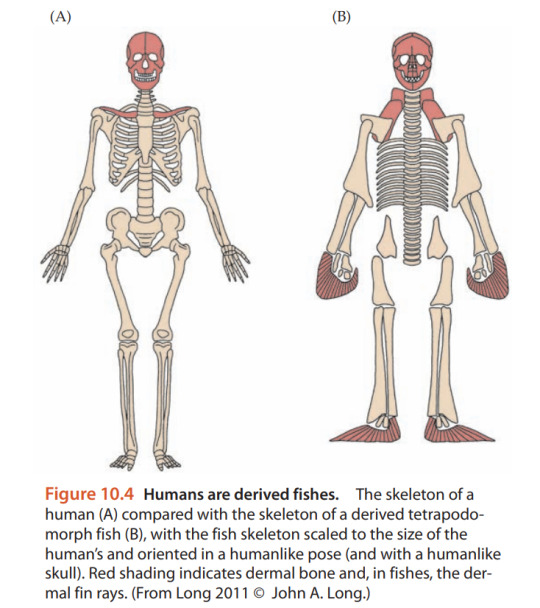
Humans are derived fishes. The skeleton of a human (A) compared with the skeleton of a derived tetrapodomorph fish (B), with the fish skeleton scaled to the size of the human’s and oriented in a humanlike pose (and with a humanlike skull). Red shading indicates dermal bone and, in fishes, the dermal fin rays. (From Long 2011 © John A. Long.)
– F. H. Pough & C. M. Janis, Vertebrate Life (10th ed., 2019; p. 165)
4K notes
·
View notes
Text
A seldom-discussed synapsid evolutionary trend is becoming a potato






279 notes
·
View notes
Text
Demons and monsters that torture people because they feed on human suffering are so dumb. People are suffering everywhere my guy go literally any place and take a deep whiff.
141K notes
·
View notes
Text
Intro to the 1989 reprint of The Color of Magic the first Discworld book by Terry Pratchett.

“At least ten.” Lmao
10K notes
·
View notes
Text
Apparently the Congo river is deep enough that there are several species of fish with cavedwelling adaptations (near-total to total blindness, loss of pigmentation, etc) because light doesn't reach where they live. the fuck


15K notes
·
View notes
Text

good bones by maggie smith saturday . give it up for good bones by maggie smith saturday
51K notes
·
View notes
Text

Ursine Tree-Kangaroo (Dendrolagus ursinus), family Macropodidae, Arfak Mountains Regency (Kabupaten Pegunungan Arfak), West Papua Province, Indonesia
photograph by Chien C. Lee
617 notes
·
View notes










